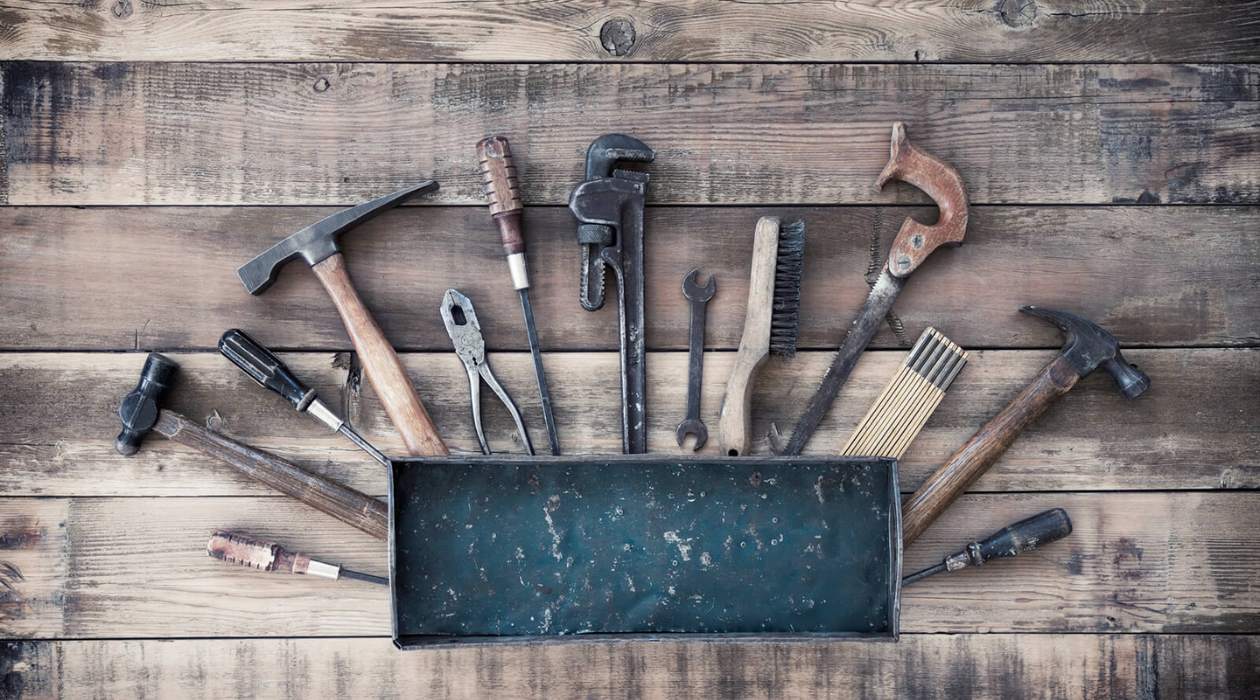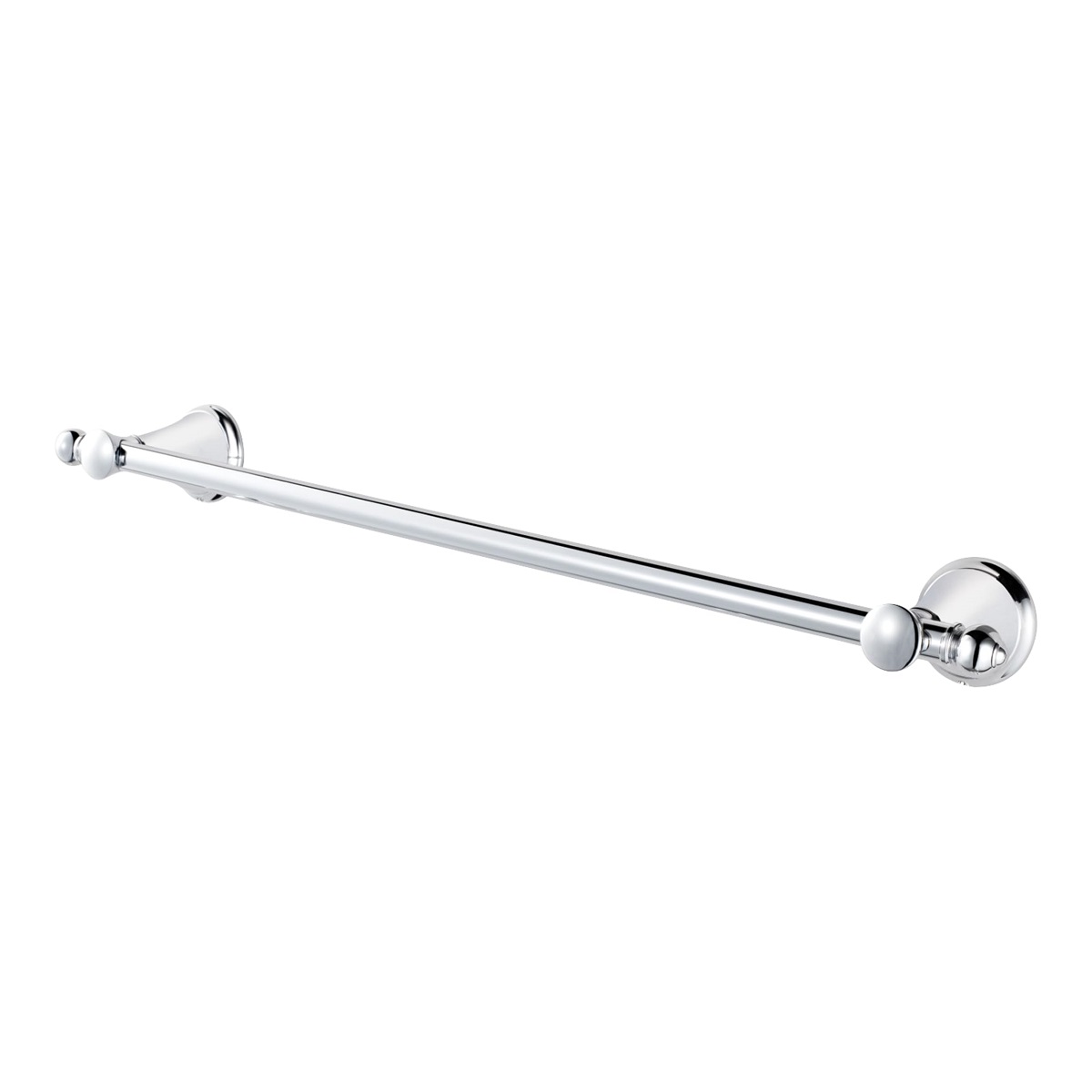Home>Home Maintenance>How To Negotiate Price For Home Maintenance


Home Maintenance
How To Negotiate Price For Home Maintenance
Modified: October 20, 2024
Learn effective strategies to negotiate the price for home maintenance services. Save money and get the best deals on repairs and renovations for your property.
(Many of the links in this article redirect to a specific reviewed product. Your purchase of these products through affiliate links helps to generate commission for Storables.com, at no extra cost. Learn more)
Introduction
Welcome to the world of home maintenance! Owning a home is a rewarding experience, but it also comes with its fair share of responsibilities. And one of the crucial aspects of maintaining a home is negotiating the price for home maintenance services.
Negotiating the price for home maintenance is important for several reasons. Firstly, it allows you to get the most value for your money. Home repairs and maintenance can be costly, and by negotiating the price, you can potentially save a significant amount of money in the long run. Secondly, it gives you the opportunity to establish a fair and reasonable price for the services you require. Lastly, negotiating the price allows you to build a relationship with service providers and establish trust, which can be beneficial for future home maintenance needs.
In this article, we will delve into the art of negotiating price for home maintenance services. We will explore the importance of researching the average cost of services, identifying potential issues, gathering quotes from multiple providers, and developing a budget. Additionally, we will discuss negotiation tactics and strategies that can help you secure a favorable deal. By the end of this article, you will have a comprehensive understanding of how to negotiate the price for home maintenance and make the most out of your budget.
So, whether you are a first-time homeowner or a seasoned pro, let’s dive into the world of negotiating price for home maintenance and unlock the secrets to getting the best value for your money. Get ready to roll up your sleeves and negotiate your way to a well-maintained home!
Key Takeaways:
- Negotiating the price for home maintenance is crucial for saving money, establishing fair prices, and building relationships with service providers. It’s a valuable skill that ensures you get the best value for your investment.
- Researching average costs, prioritizing repairs, and gathering multiple quotes are essential steps in negotiating the price for home maintenance. By being prepared and flexible, you can secure a fair deal and maintain your home effectively.
Read more: How To Price Wine By The Glass
Understanding the Importance of Negotiating Price for Home Maintenance
When it comes to home maintenance, negotiating the price is not something to be taken lightly. It plays a crucial role in ensuring that you get the best services at a fair and reasonable cost. Let’s explore why negotiating the price for home maintenance is so important.
First and foremost, negotiating the price allows you to maximize the value of your hard-earned money. Home repairs and maintenance can be costly, and by negotiating the price, you have the opportunity to save a significant amount of money. This is especially true when dealing with larger projects such as roof repairs, plumbing installations, or kitchen renovations. By negotiating, you can potentially decrease the overall cost and ensure that you are getting the best deal possible.
Aside from saving money, negotiating the price also allows you to establish a fair and reasonable price for the services you require. While there may be standard industry rates for different types of home maintenance, it’s important to remember that those prices are often negotiable. Every home and every project is unique, and by negotiating, you can ensure that the price reflects the specific scope of work, materials used, and any additional requirements. This ensures that you are not overpaying for services that may not apply to your particular situation.
Furthermore, negotiating the price for home maintenance enables you to build a relationship with service providers. By engaging in negotiations, you are establishing a line of communication and showing your willingness to work together to reach a mutually beneficial agreement. This can be valuable for your future home maintenance needs, as it allows you to build trust and rapport with reliable service providers. Over time, this can result in better pricing, priority scheduling, and even access to exclusive discounts or promotions.
In summary, negotiating the price for home maintenance is important for several reasons. It allows you to save money, establish a fair price for services, and build relationships with service providers. By taking the time to negotiate, you are ensuring that you are getting the best value for your money and setting the groundwork for a successful and cost-effective home maintenance journey. So, embrace the art of negotiation and make your home maintenance experience a financially savvy one.
Researching the Average Cost of Home Maintenance Services
Before you begin negotiating the price for home maintenance services, it’s essential to have a clear understanding of the average cost for the specific services you require. Researching the average cost will give you a baseline to work with and ensure that you are not being overcharged or undercharged. Here’s a step-by-step guide on how to research the average cost of home maintenance services.
1. Identify the Specific Services Required:
First, determine the precise services you need for your home maintenance project. Whether it’s plumbing repairs, electrical installations, or painting services, identify the specific tasks that will be involved. This will help you narrow down your research and find accurate cost estimates.
2. Reach Out to Multiple Service Providers:
Contact several reputable service providers in your area and inquire about their pricing for the services you require. Explain the nature of the job and any specific details that may impact the cost, such as the size of the area to be painted or the complexity of the electrical work. Gather quotes from at least three different providers to get a better sense of the average cost range.
3. Utilize Online Resources:
Take advantage of online resources to gather additional information on the average cost of home maintenance services. Websites like HomeAdvisor, Angie’s List, and Thumbtack provide average cost estimates for various home maintenance tasks based on your location. These platforms give you a general idea of the average cost and can serve as a useful reference point during negotiations.
4. Seek Recommendations from Others:
Talk to friends, family members, or colleagues who have recently completed similar home maintenance projects. Inquire about the services they used and the costs they incurred. This firsthand information can give you valuable insights into the average cost and help you make informed decisions during negotiations.
5. Consider the Scope and Complexity of the Project:
Keep in mind that the average cost can vary depending on the scope and complexity of the project. A straightforward plumbing repair may have a different average cost compared to a complete bathroom renovation. Take into account any additional factors that may impact pricing, such as specialized materials or equipment required for the job.
6. Evaluate the Quality of the Services:
Remember that the lowest price doesn’t always equal the best value. Consider the reputation, experience, and quality of the service providers. It’s worth paying a slightly higher price for top-quality workmanship and reliable service. Take the time to read reviews and check their credentials to ensure you’re working with reputable professionals.
By thoroughly researching the average cost of home maintenance services, you will have a solid foundation for negotiating the price. This knowledge will empower you to make informed decisions, set realistic expectations, and ensure that you are getting a fair deal. So, roll up your sleeves and dive into the research process to become a savvy negotiator in the world of home maintenance.
Identifying Potential Issues and Prioritizing Repairs
When negotiating the price for home maintenance, it’s crucial to identify potential issues and prioritize repairs. By doing so, you can allocate your budget wisely and address the most critical issues first. Here are some steps to help you in the process.
1. Conduct a Thorough Home Inspection:
Start by conducting a comprehensive home inspection to identify any potential issues that require maintenance or repair. This can include examining the structure, electrical systems, plumbing, HVAC, and other areas of your home. Look for signs of wear and tear, leaks, cracks, or any other indications of damage or degradation.
2. Categorize the Issues:
Once you’ve identified the potential problems, categorize them based on their severity and urgency. Classify them into three main categories: critical, important, and non-essential. Critical issues are those that pose immediate safety risks or can cause significant damage to your home if left unaddressed. Important issues are those that should be repaired in the near future to prevent further deterioration and potential complications. Non-essential issues are those that can be addressed at a later time without significant consequences.
3. Prioritize Based on Safety and Functionality:
When negotiating the price for home maintenance, prioritize repairs based on safety and functionality. Focus on critical issues that could jeopardize the safety of your family or cause further damage to your property if not addressed promptly. These issues may include electrical problems, structural damage, or major leaks. By addressing these high-priority repairs first, you ensure the safety and integrity of your home.
4. Consider the Long-Term Impact:
While negotiating the price, also consider the long-term impact of repairs. For instance, investing in energy-efficient upgrades or fixing underlying issues that can lead to future problems can save you money in the long run. Prioritize repairs that offer long-term benefits, such as improving energy efficiency, preventing further damage, or enhancing the longevity of systems and components.
5. Assess the Financial and Time Constraints:
Evaluate your financial and time constraints when deciding which repairs to prioritize. Consider the resources available to you, such as your budget and the time you can allocate to the repairs. You may need to negotiate a flexible payment plan or timeline with service providers based on these constraints.
6. Seek Professional Advice:
If you’re unsure about the severity or priority of certain repairs, seek advice from qualified professionals. Consult with experienced contractors or home inspectors who can provide insights into the urgency and importance of specific issues. Their expertise can help you make informed decisions when negotiating the price for home maintenance.
By identifying potential issues and prioritizing repairs, you can effectively negotiate the price for home maintenance services. By focusing on critical and important repairs first, you ensure the safety, functionality, and longevity of your home. Remember to consider the long-term impact and seek professional advice when needed. By following these steps, you’ll be on your way to creating a well-maintained and safe living environment for you and your loved ones.
Gathering Quotes and Estimates from Multiple Service Providers
When negotiating the price for home maintenance services, it’s essential to gather quotes and estimates from multiple service providers. This allows you to compare prices and make an informed decision based on the value and quality of the services offered. Here’s a step-by-step guide on how to gather quotes and estimates effectively.
1. Research Reputable Service Providers:
Start by researching and identifying reputable service providers in your area. Look for companies or contractors that specialize in the specific type of home maintenance you require, such as plumbing, electrical work, or roofing repairs. Check online reviews, ask for recommendations from family and friends, and ensure that they have the necessary licenses and insurance.
2. Provide Clear Project Details:
To receive accurate and comparable quotes, provide each service provider with clear project details. Describe the scope of work, including specific tasks, materials required, and any other relevant information. This will ensure that the quotes you receive are tailored to your project’s requirements and that you can make accurate comparisons.
3. Request and Compare Quotes:
Contact multiple service providers and request quotes for your home maintenance project. It’s recommended to gather at least three quotes to get a comprehensive understanding of the average price range. When comparing quotes, pay attention to the breakdown of costs, including labor, materials, and any additional charges or fees. This will help you evaluate the value and transparency of each quote.
4. Consider the Reputation and Experience:
Aside from the price, consider the reputation and experience of each service provider. Look for companies with a solid track record, positive customer reviews, and a history of delivering quality work. Keep in mind that the lowest quote may not always guarantee the best service, so weigh the price against the provider’s reputation and expertise.
5. Ask for References and Portfolio:
To further assess the service providers, ask for references or examples of their previous work. This will give you an idea of their quality standards and their ability to handle similar projects. Review their portfolio and reach out to past clients, if possible, to gather feedback on their experience with the service provider.
6. Inquire about Warranties and Guarantees:
When gathering quotes, inquire about any warranties or guarantees offered by the service providers. A reputable provider will stand behind their work and offer warranties for materials and workmanship. This adds an extra layer of confidence and peace of mind when negotiating the price, knowing that you are protected in the event of any issues.
7. Consider the Overall Value:
When comparing quotes, consider the overall value of each proposal. Evaluate the reputation, experience, and quality of work of each service provider, in addition to the price. Sometimes paying a slightly higher price for a more established company with excellent reviews and service may be worth the investment in the long run.
By following these steps and gathering quotes and estimates from multiple service providers, you can make an informed decision when negotiating the price for home maintenance services. Take your time to evaluate all aspects of each quote and make sure to choose a provider that not only offers a competitive price but also delivers high-quality workmanship and reliable service.
Developing a Budget and Setting a Negotiation Range
Before entering into negotiations for home maintenance services, it’s crucial to develop a budget and set a negotiation range. This will help you establish your financial boundaries and create a realistic framework for the negotiation process. Here are some steps to guide you in developing a budget and setting a negotiation range.
1. Assess Your Financial Situation:
Start by assessing your financial situation. Take into consideration your monthly income, expenses, and any other financial commitments you have. Determine how much you can comfortably allocate towards home maintenance services without placing undue strain on your finances.
2. Research Average Cost:
Research the average cost of the specific home maintenance services you require. Use online resources, such as industry websites or cost calculators, to get an idea of the typical price range. This will provide you with a benchmark to compare against when developing your budget.
3. Consider the Importance and Urgency:
Evaluate the importance and urgency of the maintenance services needed. Determine which repairs are essential and require immediate attention, and which can be postponed for a later time. Allocate a higher portion of your budget to critical or urgent repairs while allocating a smaller portion for non-essential tasks.
4. Factor in Additional Expenses:
When developing your budget, remember to factor in any additional expenses that may arise during the maintenance process. These can include unforeseen repairs or the need to upgrade materials or equipment. Leave some room in your budget for such contingencies to avoid any financial surprises down the line.
5. Set a Negotiation Range:
Based on your budget and the average cost of the services, set a negotiation range. Determine the minimum and maximum amount you are willing to pay for the desired home maintenance services. The minimum should be a reasonable price that you believe reflects the value of the services, while the maximum serves as an upper limit beyond which you are not willing to go.
6. Be Realistic and Flexible:
While setting your negotiation range, it’s essential to be realistic and flexible. Understand that service providers have their own cost structures and pricing strategies. Your ideal negotiation range should allow room for negotiation without being unrealistic or undervaluing the services being provided.
7. Communicate Your Budget and Range:
During the negotiation process, effectively communicate your budget and negotiation range to the service providers. This will provide a clear framework for discussions and help ensure that both parties have a realistic understanding of what can be accomplished within the given budget constraints.
Remember that negotiation is a two-way process, and both parties should be willing to find a mutually beneficial agreement. By setting a budget and negotiation range, you provide yourself with a clear roadmap and financial boundaries for the negotiation process. This allows you to strike a balance between getting the best value for your money and respecting the service providers’ expertise and pricing structure.
When negotiating the price for home maintenance, do your research on the average cost of the service in your area. Get multiple quotes and use them as leverage to negotiate a fair price.
Negotiating with Service Providers to Lower the Price
Negotiating the price with service providers is an essential part of the home maintenance process. It allows you to explore potential cost savings and secure a fair deal for the services you require. Here are some strategies to help you effectively negotiate with service providers and lower the price.
1. Understand the Value of Your Project:
Before entering into negotiations, it’s important to understand the value of your project. Consider the size, complexity, and scope of the work involved. Highlight any unique aspects or challenges that may set your project apart. By showcasing the value of your project, you can establish a stronger position for negotiation.
2. Gather Multiple Quotes:
Having received quotes from multiple service providers, you now have the information needed to negotiate effectively. Use the range of quotes to your advantage and leverage the competitive landscape. Discuss the quotes you have received with each service provider and inquire if they can offer a more competitive price.
3. Highlight Competitor Quotes:
When negotiating, don’t hesitate to mention the quotes you have received from other service providers. This demonstrates that you have done your research and have alternative options available. It puts pressure on the service provider to offer a more competitive price or match the quotes you’ve received.
4. Emphasize Long-Term Relationship Potential:
If you have future home maintenance needs or anticipate additional services down the line, emphasize the potential for a long-term relationship with the service provider. Highlight your interest in establishing a mutually beneficial partnership and discuss the possibility of future work. This can incentivize the provider to offer a lower price in the interest of securing a long-term customer.
5. Offer Flexible Timing or Scheduling:
Consider offering flexible timing or scheduling as a negotiation strategy. If the service provider is experiencing a lull in their schedule or has availability during off-peak periods, they may be more inclined to offer a discounted rate. Offering flexibility in the timing of the project can create a win-win situation where you get a lower price, and the provider fills their schedule more effectively.
6. Bundle Services or Repairs:
If you require multiple services or repairs, consider bundling them together as a negotiation tactic. Offering a larger scope of work can incentivize the provider to offer a discounted price. This is especially effective if the services can be completed more efficiently when combined.
7. Be Prepared to Compromise:
When negotiating, it’s essential to be prepared to compromise. While it’s important to strive for a lower price, understand that service providers have their own costs and expertise to consider. Be open to finding a middle ground that satisfies both parties. This can involve adjustments to the scope of work, payment terms, or other factors that can help reach a mutually beneficial agreement.
Remember that negotiation is a conversation aimed at finding a fair and advantageous solution for all parties involved. Approach the negotiation process with a respectful and collaborative mindset, and be open to finding creative solutions that result in a lower price for your home maintenance services.
Utilizing Negotiation Tactics and Strategies
When negotiating the price for home maintenance services, it’s important to utilize negotiation tactics and strategies to maximize your chances of securing a favorable deal. Here are some effective tactics to help you navigate the negotiation process:
1. Start with a Friendly and Respectful Tone:
Establishing a friendly and respectful tone from the beginning can set a positive foundation for the negotiation. Be polite and professional in your communication, showing genuine interest in working together and finding a mutually beneficial agreement. A positive tone can create a cooperative atmosphere and foster a more productive negotiation process.
2. Gather Information and Facts:
Before entering into negotiations, gather as much information and facts as possible. Educate yourself on the specific services required, industry standards, and any unique aspects related to your project. Having a solid understanding of the subject matter will give you confidence and credibility when discussing pricing and terms with service providers.
3. Practice Active Listening:
During negotiations, practice active listening to fully understand the needs and concerns of the service provider. Pay attention to their perspectives, ask clarifying questions, and show empathy towards their challenges. Active listening demonstrates your willingness to collaborate and find a solution that meets both parties’ objectives.
4. Provide Justification for Desired Price:
When negotiating, it’s important to provide justification for the desired price or any proposed adjustments. Highlight the value and benefits that the service provider will receive by working with you. Explain how your project aligns with their expertise and how a fair and reasonable price will ensure a successful and long-lasting partnership.
5. Seek Multiple Options:
Instead of focusing solely on reducing the price, explore ways to seek multiple options. This can involve discussing alternative approaches, materials, or timelines that may help achieve cost savings without compromising on quality. By presenting various options, you demonstrate flexibility and a willingness to find common ground.
6. Hold Firm on Budget Constraints:
While being open to a range of options, it’s crucial to hold firm on your budget constraints. Clearly communicate your financial limitations and the maximum budget you are willing to allocate for the project. Holding firm on your budget shows that you are serious about staying within your means and can help steer the negotiation towards a more realistic outcome.
7. Be Prepared to Walk Away:
Sometimes, negotiations may reach an impasse and a mutually satisfactory agreement cannot be reached. Be prepared to walk away if the terms and price offered do not align with your needs or expectations. Walking away can create an opportunity for you to explore other service providers who may be more accommodating to your budget and requirements.
Remember, negotiation is a process of give and take. Remain flexible, adaptive, and open to finding creative solutions that benefit all parties involved. By utilizing smart negotiation tactics and strategies, you can increase your chances of obtaining a favorable price for your home maintenance services while maintaining a respectful and collaborative relationship with the service provider.
Negotiating Additional Benefits or Discounts
Negotiating the price for home maintenance services is not just limited to getting a lower cost. You can also explore the possibility of negotiating additional benefits or discounts to further enhance the value and affordability of the services. Here are some tactics to help you negotiate for additional benefits or discounts:
1. Bundle Services or Repairs:
Consider bundling multiple services or repairs together as part of your negotiation strategy. When you consolidate your home maintenance needs into a single project, you create an opportunity to negotiate a discounted overall price. Service providers may be more inclined to offer a better deal when they see the potential for a larger scope of work.
2. Long-Term Service Agreements:
If you anticipate ongoing maintenance needs or a series of future projects, discuss the possibility of a long-term service agreement with the provider. This agreement can involve a discounted rate for repeated services over a specified duration. Highlight the benefits for both parties, such as guaranteed work for the provider and cost savings for you.
3. Request Value-Added Services:
Aside from a lower price, consider negotiating for value-added services that can enhance the overall value of the maintenance project. This can include requesting additional inspections, regular maintenance checks, extended warranties, or the use of higher quality materials without additional charges. These extras can contribute to the long-term performance and durability of your home.
4. Flexible Payment Terms:
Negotiate for flexible payment terms that align with your budget and financial constraints. Request payment installments, milestone-based payments, or delayed payment dates to accommodate your cash flow. Service providers may be willing to offer flexibility in the payment structure to secure your business.
5. Inquire about Promotions or Discounts:
Don’t hesitate to ask service providers if they have any ongoing promotions or discounts that you may be eligible for. They may have seasonal offers, first-time customer discounts, or referral incentives that you can take advantage of. Even if they don’t mention any specific discounts, it never hurts to inquire and see if any available options can be applied to your project.
6. Highlight Potential Referrals:
If you have connections or can provide referrals to the service provider, use this as leverage during negotiations. Emphasize your willingness to recommend their services to your network, potentially generating future business for them. In return, you can negotiate for a discounted price or additional benefits as a gesture of appreciation.
7. Request Multiple Quotes:
When gathering quotes from different service providers, specifically inquire about any additional benefits or discounts they can provide. Some companies may include extra services or exclusive offers in their quotes as a way to stand out from the competition. Take advantage of these opportunities and compare the additional benefits offered by different providers.
Negotiating for additional benefits or discounts can add significant value to your home maintenance project. Remember to clearly communicate your needs and expectations, and be open to exploring creative solutions that benefit both parties. By leveraging these negotiation tactics, you can maximize the benefits you receive while ensuring that you are getting the best value for your money.
Read more: How To Price A Job In Construction
Finalizing the Negotiated Price and Closing the Deal
After successfully negotiating the price and potentially securing additional benefits or discounts, it’s time to finalize the negotiated price and close the deal with the service provider. Here are some key steps to guide you in this final stage of the negotiation process:
1. Confirm the Agreed-Upon Terms:
Review the negotiated terms, including the price, scope of work, and any additional benefits or discounts. Make sure you have a clear understanding of what has been agreed upon during the negotiation process. Clarify any questions or concerns before proceeding further.
2. Put It in Writing:
To solidify the agreement and avoid any misunderstandings, it’s crucial to put the negotiated terms in writing. Prepare a written contract or agreement that outlines all the details discussed and agreed upon, including the price, timeline, scope of work, payment terms, and any additional benefits or discounts. Ensure that both parties review and sign the document to acknowledge their commitment to the agreement.
3. Review Terms and Conditions:
Carefully review the terms and conditions of the agreement before signing. Pay attention to any fine print, limitations, or exclusions that may have been included. Seek clarification on any clauses or provisions that you find unclear or ambiguous. It’s important to have a clear understanding of the terms and conditions to avoid potential issues in the future.
4. Discuss Payment Options:
As part of finalizing the deal, discuss the payment options available. Determine the preferred method of payment, whether it’s cash, check, credit card, or an online payment platform. Clarify if there are any specific payment deadlines or milestones outlined in the agreement. Ensure that both parties are in agreement on the payment terms before moving forward.
5. Schedule the Work and Confirm Availability:
Set a mutually agreed-upon schedule for the initiation and completion of the work. Confirm the availability of the service provider and ensure that the timeline aligns with your needs. Take into account any factors that may impact the schedule, such as weather conditions or waiting for materials to arrive. Having a clear understanding of the timing expectations will help ensure a smooth and efficient process.
6. Maintain Open Communication:
Throughout the process, maintain open lines of communication with the service provider. Keep them updated on any changes or developments that may impact the agreed-upon terms. Likewise, encourage the service provider to communicate any unexpected issues or delays promptly. Clear and consistent communication is key to a successful home maintenance project.
7. Complete the Payment as Agreed:
Once the work is completed in accordance with the agreed-upon terms, fulfill your payment obligations as outlined in the agreement. Make the payment promptly, following the payment schedule or terms discussed. This demonstrates your professionalism and commitment to the agreement, helping to maintain a positive relationship with the service provider.
By following these steps, you can finalize the negotiated price and successfully close the deal with the service provider. Remember to always maintain professionalism, read and understand all agreements before signing, and keep open lines of communication throughout the process. By doing so, you can ensure a successful and satisfactory home maintenance experience.
Conclusion
Negotiating the price for home maintenance services is a valuable skill that can save you money and ensure you get the best value for your investment. By understanding the importance of negotiation, researching the average cost, identifying potential issues, gathering quotes, and setting a budget, you’ve taken the first steps towards successful negotiations.
Throughout the negotiation process, remember to be respectful and maintain a positive attitude. Utilize tactics and strategies such as active listening, bundling services, and emphasizing long-term relationships to achieve the most favorable outcome. By negotiating additional benefits or discounts, you can enhance the value of the services and potentially save even more money.
Once you’ve negotiated the price to your satisfaction, it’s crucial to finalize the agreement by putting everything in writing and reviewing the terms and conditions. Confirm the payment options and schedule the work, ensuring open communication with the service provider throughout the process. By closing the deal and fulfilling your payment obligations promptly, you demonstrate your professionalism and commitment to the agreement.
In conclusion, negotiating the price for home maintenance requires research, preparation, and effective communication. By following the strategies outlined in this article, you have the tools to negotiate confidently and secure a fair deal for the services you require. Remember that negotiation is a two-way process, aiming for a win-win outcome where both parties benefit. By mastering the art of negotiation, you can maintain your home effectively while staying within your budget.
Frequently Asked Questions about How To Negotiate Price For Home Maintenance
Was this page helpful?
At Storables.com, we guarantee accurate and reliable information. Our content, validated by Expert Board Contributors, is crafted following stringent Editorial Policies. We're committed to providing you with well-researched, expert-backed insights for all your informational needs.













